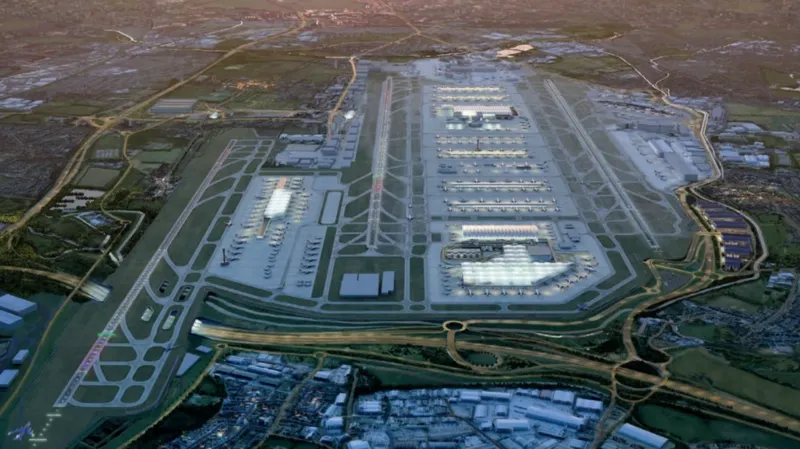Heathrow Airport has unveiled an ambitious £49 billion expansion plan, highlighting the urgency of growth to meet rising demand and improve UK connectivity. CEO Thomas Woldbye stressed that the airport is operating at full capacity, calling expansion “urgent” to support trade and economic development. The plan, funded through private finance, includes a new 3,500m “North-Western Runway,” a new T5X terminal, upgrades to rail and bus services, and a diversion of the M25 motorway via a tunnel.
Chancellor Rachel Reeves backed the plan, calling it key to making the UK “the world’s best connected place to do business.” Business groups such as the CBI and British Chambers of Commerce hailed the proposal as “an investment in the nation’s future,” forecasting a GDP boost of 0.43% and improved access to global markets.
However, the proposal has sparked immediate backlash from environmental groups, local leaders, and MPs. Mayor of London Sadiq Khan warned of a “severe impact on noise, air pollution and climate targets,” while Liberal Democrat MP Munira Wilson branded Heathrow “the UK’s single largest polluter.” Greenpeace UK’s Dr Douglas Parr dismissed the plan’s green credentials as “hopeful marketing spin,” suggesting a frequent flyer levy instead.
Critics also pointed to the £21bn price tag just to build the third runway, which includes realigning the M25. Rival developer Arora Group proposed an alternative £25bn expansion plan that avoids moving the M25 by building a shorter runway.
Transport Secretary Heidi Alexander acknowledged both plans, promising a thorough review of the Airports National Policy Statement later this year.
Despite official backing, the project faces historical and political challenges. Previous third runway plans under Labour in 2009 and the Conservatives in 2018 were derailed by legal battles and the pandemic. BBC political editor Karl Mercer noted that while interest from bidders is crucial, “the hardest half will be getting it delivered.”
As Heathrow looks to break ground within the decade, the future of the UK’s busiest airport hangs in a delicate balance between economic ambition and environmental responsibility.

